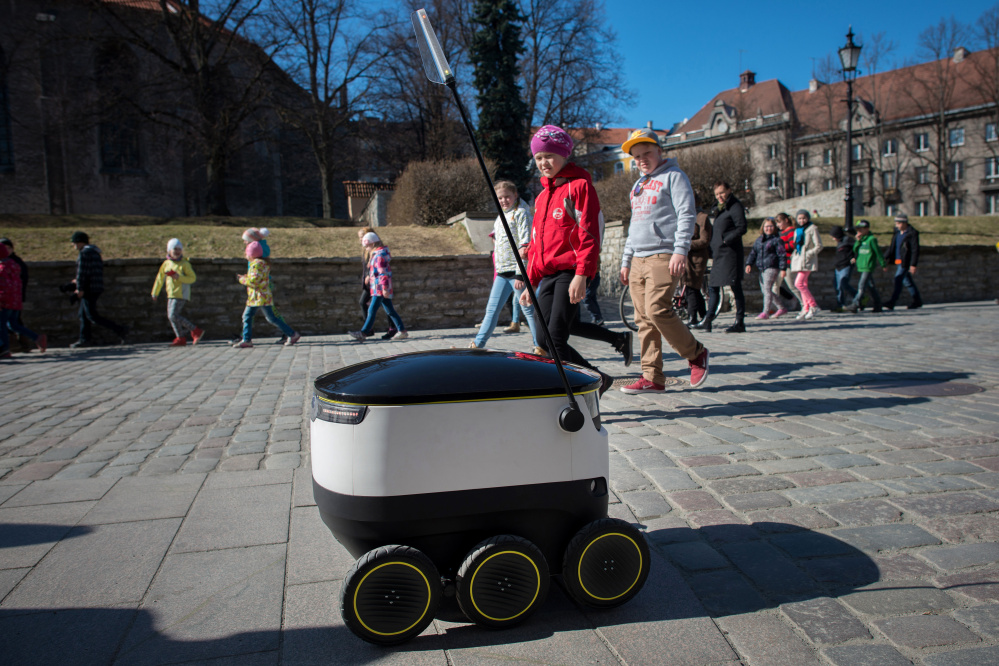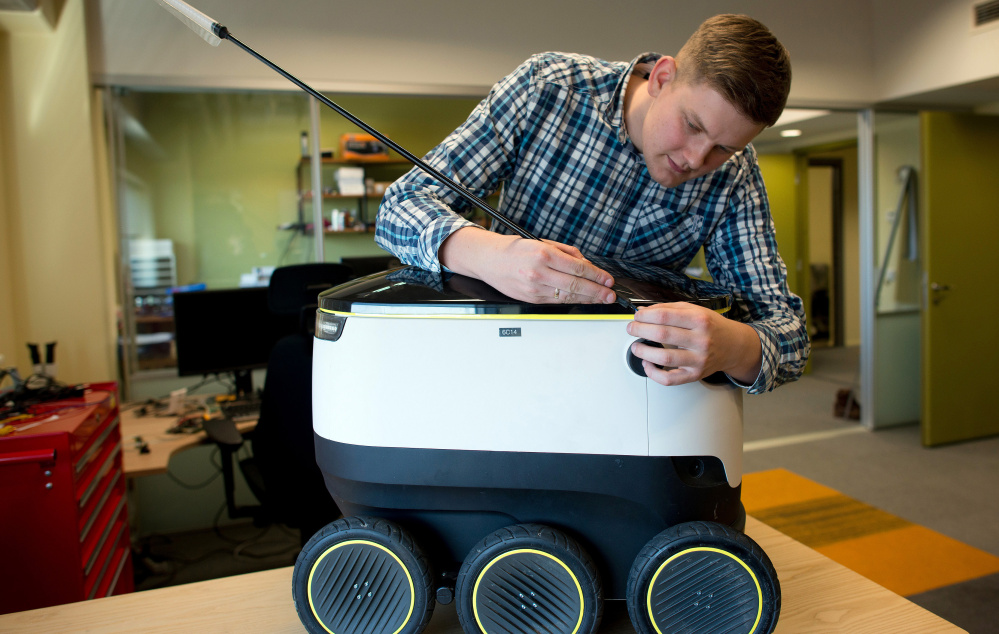In the shadow of Greenwich’s 02 Arena – the futuristic dome originally built as London’s showpiece for the Millennium – what looks like a picnic cooler on wheels zips among groups of gawking children. This little delivery robot, designed to autonomously navigate sidewalks, not roads, later this year will begin making deliveries from local businesses direct to customers.
In doing so, it may just conquer e-commerce’s final frontier: the Last Mile, the least efficient and most problematic step in the delivery process.
“Thirty to forty percent of the cost of delivery comes in the last mile,” says Allan Martinson, the chief operating officer of Starship Technologies, the company building this robot. The venture is the brainchild of Ahti Heinla, one of Skype’s original developers, and is backed by billionaire Skype co-founder and tech investor Janus Friis.
The little delivery robots designed by Starship and a competing U.S. startup called Dispatch are the BB-8s and Wall-E’s of e-commerce. These scrappy droids are up against tech’s strongest forces. Amazon is testing airborne drones, as are Wal-Mart and Google. Google has also sought patents for a driverless truck that would carry an array of storage lockers that unlock with a text message. And Uber is deploying drivers for food delivery, a concept that could be expanded to other products. And don’t forget incumbents from Federal Express and UPS to government postal services.
CONFINED TO URBAN AREAS
While Starship’s robot may be first to market, victory isn’t assured. The droids have limitations, with economic viability confined to urban areas. Drones have a higher sticker price and bigger regulatory hurdles to surmount, but may prove less expensive on a per-mile basis. And for the foreseeable future, some logistics experts say, humans still have the edge over any sci-fi inspired contenders.
Heinla, a tall Estonian with shaggy blond hair and the disheveled look of an engineer for whom form matters more than fashion, says delivery droids have their advantages. Smaller robots are easier and cheaper to build. Because Starship’s droid weighs less than 35 pounds and travels slowly, it’s less likely to cause damage. There are no spinning rotorblades that could cause injury, unlike drones.
Most importantly it travels on sidewalks not roads, which simplifies getting regulatory approval to operate. Starship robots have already covered more than 1,900 miles in Britain, Germany, Belgium, Estonia and the U.S., with more than 50,000 miles planned this year. In comparison, drones are being tested in highly controlled environments, with commercial deliveries on hold until regulators work out safety, liability, air rights and privacy issues. Autonomous vehicles are so far only allowed limited tests on public roads.
“We’ve tested it in snow, slush, ice and rain – you name it,” Martinson says. In the U.S., Starship is testing its robot in Fayetteville, Arkansas, near Wal-Mart’s Bentonville headquarters, in conjunction with an innovation lab at the University of Arkansas named after the family of Wal-Mart chief executive Doug McMillon. This has spawned speculation the giant retailer may be interested in the little robot. Wal-Mart’s 415C Lab has said it is monitoring the testing program. Starship won’t comment on a possible tie-up with Wal-Mart. But Martinson says he expects the first e-commerce customers to start using the robots later this year.
TO DROID OR DRONE?
San Francisco-based Dispatch, which was founded by former computer scientists from the University of Pennsylvania and the Massachusetts Institute of Technology and is backed by Silicon Valley venture firm Andreessen Horowitz, is also testing its own ground drone called Carry.
Gur Kimchi, the Amazon executive in charge of its Prime Air drone project, says they considered delivery robots and driverless trucks too. But Amazon decided drones were a better bet. “The other options cannot guarantee very fast, very economic and very safe delivery,” he says. Drones, he says, can serve a range of rural, suburban and even urban environments – while delivery robots work best only in urban areas. And autonomous trucks or delivery drivers only add to already congested roads, he says.
Kimchi says that Amazon’s drones, which can carry up to five pounds for 15 miles at speeds of up to 60 miles per hour, will cover 80 percent to 90 percent of its shipments. “It is a surprisingly large subset of our selection,” he says. In a May 2015 analysis by investment research firm ARK Invest, analyst Tasha Keeney estimated that by using drones, Amazon could reduce its delivery costs to less than $1 per package, or as little as 10 cents per mile.
To ensure safety, drones have “sense and avoid” technology that will steer clear of obstacles or potential hazards including even the family dog.
Send questions/comments to the editors.




Success. Please wait for the page to reload. If the page does not reload within 5 seconds, please refresh the page.
Enter your email and password to access comments.
Hi, to comment on stories you must . This profile is in addition to your subscription and website login.
Already have a commenting profile? .
Invalid username/password.
Please check your email to confirm and complete your registration.
Only subscribers are eligible to post comments. Please subscribe or login first for digital access. Here’s why.
Use the form below to reset your password. When you've submitted your account email, we will send an email with a reset code.